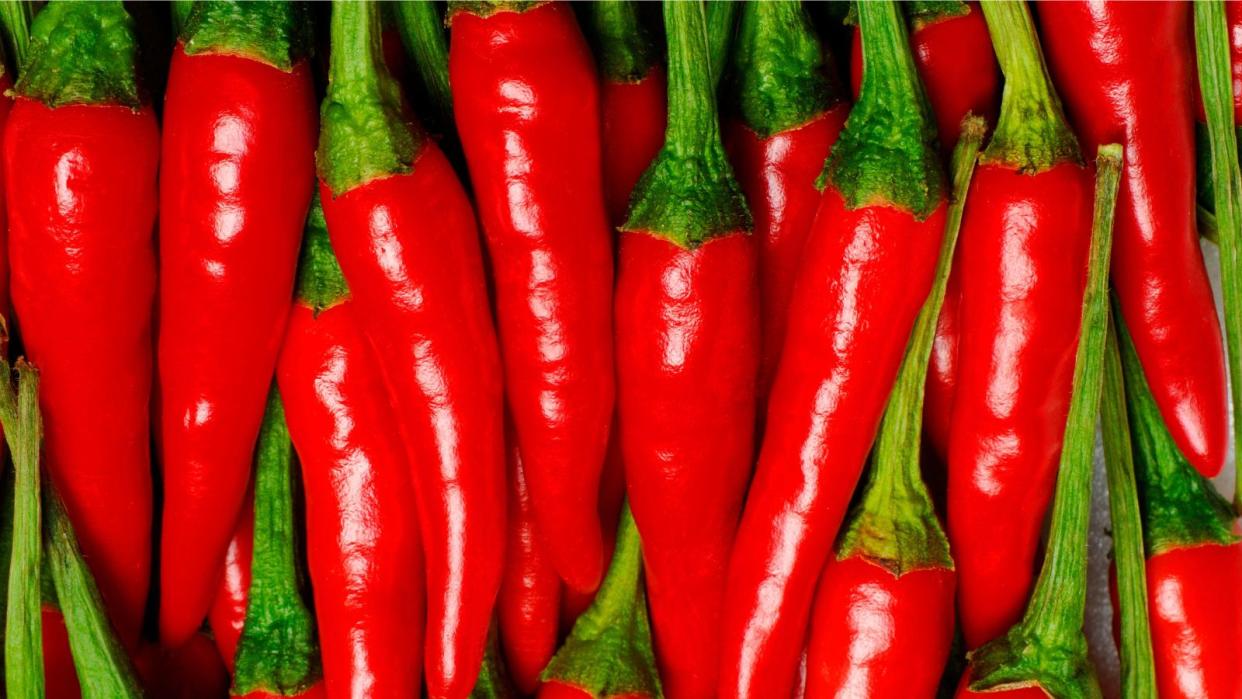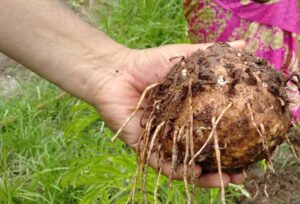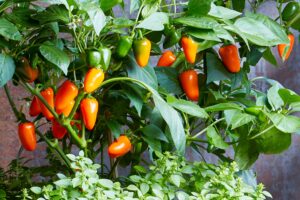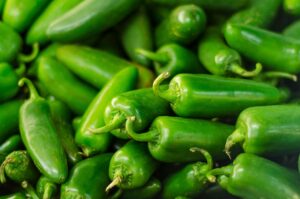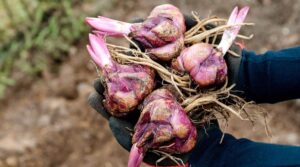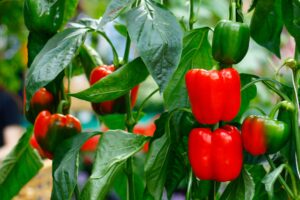How to Grow Cayenne Pepper: A Complete Guide
Cayenne peppers are versatile, spicy additions to any culinary herb garden. Whether you’re looking to add heat to your favorite dishes or simply want to expand your gardening skills, growing cayenne peppers can be a rewarding experience. These vibrant red peppers, measuring 10,000-50,000 Scoville Heat Units, are not only popular for their distinctive flavor but also for their numerous health benefits. According to the USDA Agricultural Research Service, cayenne peppers are rich in vitamins A, C, and E, making them a nutritious addition to your diet.
In this comprehensive guide, you’ll learn everything you need to know about growing cayenne peppers in your garden, in pots, or indoors from seed. We’ll cover soil requirements, optimal growing conditions, watering needs, pest management, harvesting techniques, and much more.
Why Grow Your Own Cayenne Peppers?
Before diving into the growing process, let’s explore why cultivating your own cayenne peppers is worthwhile:
- Freshness: Home-grown cayenne peppers offer unparalleled freshness compared to store-bought varieties.
- Cost-effective: Once established, a few plants can produce dozens of peppers throughout the growing season.
- Variety options: Growing your own allows you to experiment with different cayenne varieties not available in stores.
- Organic control: You decide what goes into your soil and onto your plants.
- Satisfaction: Few things are more rewarding than cooking with ingredients you’ve grown yourself.
The U.S. market for hot peppers continues to grow, with cayenne being one of the most popular varieties. According to the USDA National Agricultural Statistics Service, the value of U.S. chile pepper production exceeds $100 million annually, with increasing consumer interest in spicy foods driving demand.
Understanding Cayenne Peppers
Cayenne peppers (Capsicum annuum) are part of the nightshade family and are native to tropical regions of the Americas. They’re known for their:
- Long, slender shape (typically 3-5 inches)
- Bright red color when mature
- Moderately hot flavor profile
- Versatility in cooking applications
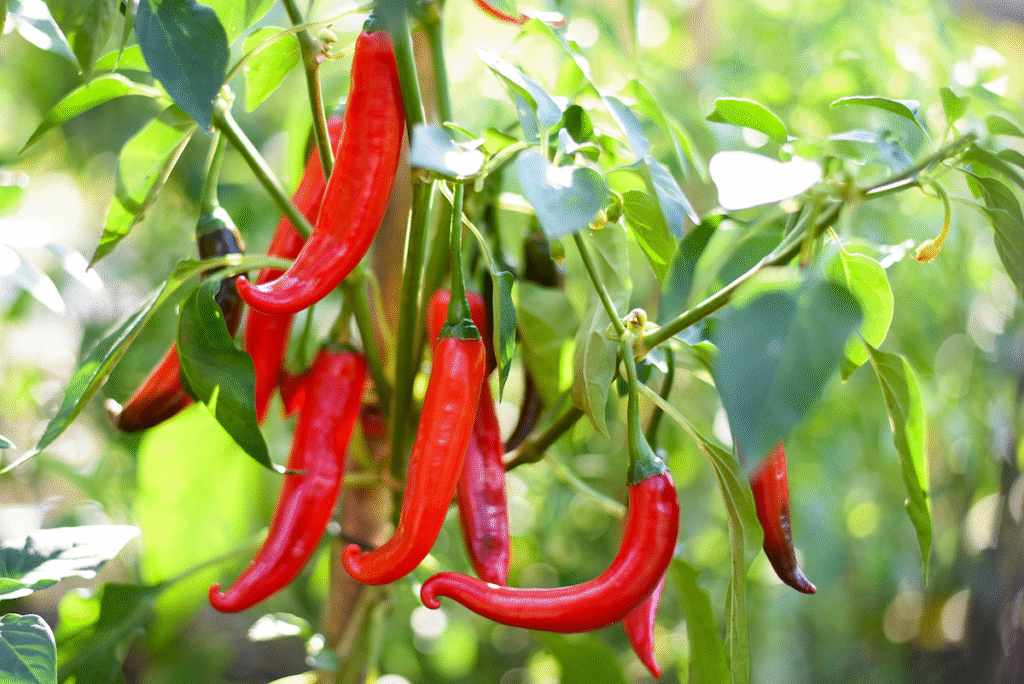
Popular Cayenne Varieties for Home Gardeners
| Variety | Days to Maturity | Heat Level (Scoville) | Plant Height | Special Characteristics |
|---|---|---|---|---|
| Traditional Cayenne | 70-80 days | 30,000-50,000 | 24-36 inches | Classic thin, curved shape |
| Long Slim | 75 days | 25,000-30,000 | 24-30 inches | Prolific producer |
| Golden Cayenne | 80 days | 30,000-50,000 | 24-30 inches | Yellow-gold fruits |
| Carolina Cayenne | 70-75 days | 70,000-80,000 | 24-36 inches | Extra hot variety |
| Thai Hot | 70-80 days | 50,000-100,000 | 12-18 inches | Compact plant, ideal for containers |
| Cayenne Sweet | 75 days | 2,500-3,000 | 24-30 inches | Milder heat level |
Growing Cayenne Peppers in Your Garden
Choosing the Right Location
Cayenne peppers thrive in full sun conditions. When planning your garden:
- Select a spot that receives at least 6-8 hours of direct sunlight daily
- Ensure good air circulation to prevent fungal diseases
- Choose a location sheltered from strong winds
- Consider companion planting with basil, onions, or carrots to deter pests
Soil Requirements
Cayenne peppers prefer:
- Well-draining, loamy soil
- Slightly acidic to neutral pH (6.0-7.0)
- Rich in organic matter
Before planting, work 2-3 inches of compost into your soil to improve drainage and add nutrients. According to the USDA Natural Resources Conservation Service, proper soil preparation is essential for healthy pepper plants.
When to Plant
Timing is crucial for successful cayenne pepper cultivation:
- Start seeds indoors: 8-10 weeks before your last spring frost date
- Transplant outdoors: 2-3 weeks after your last frost date, when soil temperatures reach at least 65°F
- Direct seeding: Not recommended for most regions due to cayenne’s long growing season
Planting Process
- Dig holes twice as wide as your seedling root balls
- Space plants 18-24 inches apart in rows 24-36 inches apart
- Plant at the same depth as they were in their containers
- Water thoroughly after planting
- Apply a 2-3 inch layer of organic mulch to retain moisture and suppress weeds
Growing Cayenne Peppers in Containers
Container gardening offers flexibility and is ideal if you have limited space or poor garden soil.
Choosing the Right Container
For successful container-grown cayenne peppers:
- Select containers at least 12 inches deep and 12 inches in diameter
- Ensure adequate drainage holes
- Consider using fabric pots or terra cotta containers, which allow better air circulation
- Dark-colored containers absorb heat and can help warm soil in cooler climates
Container Soil Mix
Create the optimal growing medium by mixing:
- 2 parts quality potting soil
- 1 part compost
- 1 part perlite or vermiculite for drainage
Avoid using garden soil in containers as it can compact and harbor diseases.
Container Care Tips
Container-grown cayennes require special attention:
- Water more frequently than garden plants, typically when the top inch of soil feels dry
- Fertilize regularly with a half-strength balanced liquid fertilizer every 2-3 weeks
- Rotate containers periodically to ensure even growth and sun exposure
- Consider moving containers to protected areas during extreme weather
Growing Cayenne Peppers Indoors
Yes, you can grow cayenne peppers entirely indoors with the right conditions!
Light Requirements
Cayenne peppers need abundant light when grown indoors:
- Place near a south-facing window for maximum natural light
- Supplement with grow lights if necessary
- Provide 14-16 hours of light daily
- Keep lights 6-12 inches above plants to prevent burning
Temperature and Humidity
Create a favorable indoor environment:
- Maintain temperatures between 65-80°F during the day and no lower than 60°F at night
- Increase humidity by misting plants regularly or using a humidifier
- Provide good air circulation with a small fan to prevent disease
- Keep plants away from drafty windows or heating/cooling vents
Pollination
Indoor peppers require assistance with pollination:
- Gently shake plants when flowers are open to distribute pollen
- Use a small paintbrush to transfer pollen between flowers
- Run a fan on low setting to simulate wind and aid pollination
Starting Cayenne Peppers from Seed
Growing from seed provides the widest variety options and can be cost-effective.
Seed Starting Process
- Soak seeds in warm water for 8-12 hours to improve germination
- Fill seed trays with seed-starting mix
- Plant seeds ¼ inch deep, 2-3 seeds per cell
- Keep soil moist but not soggy
- Maintain temperatures between 70-85°F for optimal germination
- Provide bright, indirect light once seeds germinate
- Thin to one plant per cell when seedlings have their first true leaves
Common Seed Starting Problems
| Problem | Cause | Solution |
|---|---|---|
| Seeds not germinating | Too cold, old seeds, too deep | Provide bottom heat, use fresh seeds, plant shallower |
| Leggy seedlings | Insufficient light | Increase light, move closer to light source |
| Damping off | Overwatering, poor air circulation | Water less, improve air flow, use sterile media |
| Yellow leaves | Nutrient deficiency | Start feeding with half-strength fertilizer |
| Slow growth | Low temperatures | Increase ambient temperature |
Caring for Cayenne Pepper Plants
Watering
Proper watering is crucial for healthy cayenne plants:
- Water deeply but infrequently, allowing soil to dry slightly between waterings
- Aim for 1-2 inches of water per week, including rainfall
- Water at soil level to keep foliage dry and prevent disease
- Increase watering during fruit development and hot weather
- Reduce watering when temperatures cool in fall
Fertilizing
Cayenne peppers are moderate feeders:
- Apply balanced fertilizer (10-10-10) when transplanting
- Side-dress with compost midway through the growing season
- Consider biweekly applications of diluted fish emulsion or seaweed extract
- Avoid high-nitrogen fertilizers which promote foliage at the expense of fruit
- Stop fertilizing when peppers begin to change color
Support and Pruning
Though not always necessary, proper support and pruning can increase yields:
- Consider caging or staking larger varieties to prevent stem breakage
- Prune lower leaves that touch the soil to prevent disease
- Remove first flowers to encourage stronger plant development
- Pinch growing tips to promote bushier growth
Managing Pests and Diseases
Common Pests
| PestSymptomsOrganic Control MethodsAphidsCurled leaves, sticky residueInsecticidal soap, neem oil, ladybugsSpider MitesFine webbing, stippled leavesStrong water spray, neem oil, predatory mitesPepper MaggotsDimpled fruit, internal tunnelingRow covers, crop rotation, remove affected fruitCutwormsSevered stems at soil levelCardboard collars, diatomaceous earthHornwormsDefoliation, large droppingsHandpicking, Bt (Bacillus thuringiensis) |
|---|
Disease Prevention
According to the USDA Plant Hardiness Zone Map, different regions face different disease pressures. General prevention strategies include:
- Crop rotation: Don’t plant peppers where other nightshades (tomatoes, eggplants) grew in the previous 3 years
- Adequate spacing: Ensure proper air circulation between plants
- Avoid overhead watering: Water at soil level to keep foliage dry
- Remove plant debris: Clean up fallen leaves and fruits promptly
- Use disease-resistant varieties when available
Harvesting and Using Cayenne Peppers
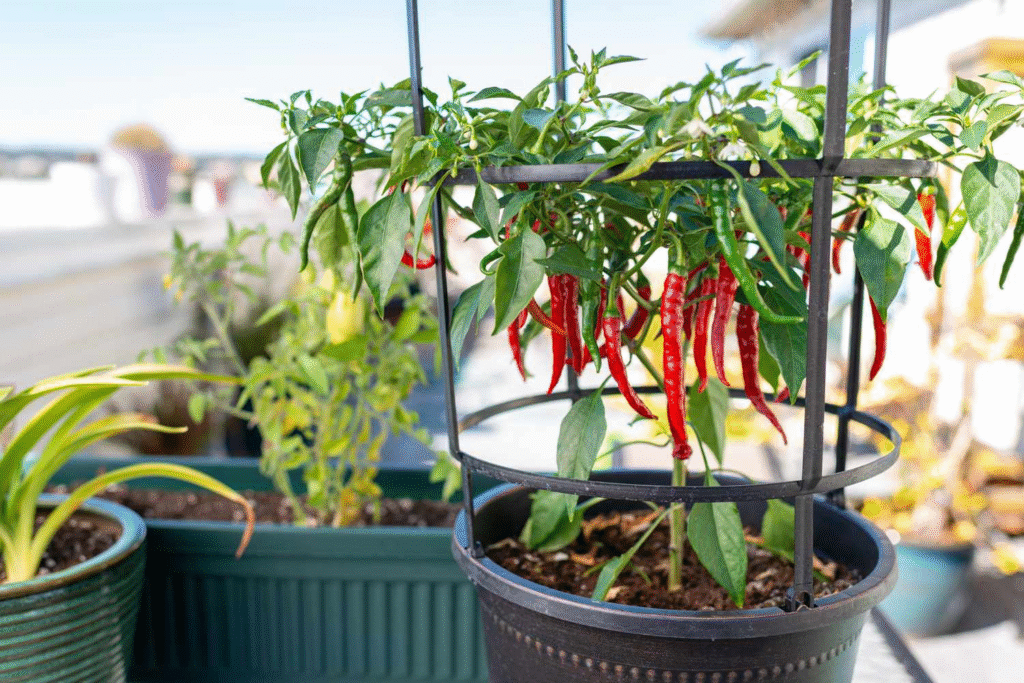
When to Harvest
Cayenne peppers can be harvested at different stages:
- Green: Less heat, more vegetal flavor (65-70 days after transplanting)
- Red: Full heat and sweetness (75-85 days after transplanting)
- Signs of readiness: Firm texture, vibrant color, easy to pull from stem
Harvesting Methods
To harvest cayenne peppers:
- Use clean, sharp scissors or pruning shears
- Cut the pepper stem about ¼ inch above the fruit
- Handle with care to avoid damaging plants
- Consider wearing gloves to prevent skin irritation
- Harvest frequently to encourage continued production
Storing Your Harvest
Fresh cayenne peppers can be:
- Refrigerated in a paper bag for 1-2 weeks
- Frozen whole or chopped for up to 10 months
- Dried using a dehydrator, oven, or by air-drying
- Preserved in oil, vinegar, or by pickling
Using Cayenne in the Kitchen
Maximize your cayenne harvest with these culinary applications:
- Chili powders: Grind dried cayennes for homemade spice blends
- Hot sauces: Ferment or cook with vinegar for custom hot sauces
- Infused oils: Add dried peppers to olive oil for flavored cooking oils
- Pepper flakes: Crush dried peppers for pizza and pasta toppings
- Marinades: Include fresh or dried in meat and vegetable marinades
Saving Seeds for Next Season
Extend your cayenne pepper journey by saving seeds:
- Select mature peppers from healthy, productive plants
- Allow peppers to fully ripen on the plant until they begin to wrinkle
- Cut open and remove seeds, spreading them on a paper towel to dry
- Store completely dry seeds in paper envelopes or glass jars
- Label with variety and date
- Store in a cool, dry place for up to 3 years
Troubleshooting Common Issues
| Problem | Possible Cause | Solution |
|---|---|---|
| Flowers dropping | Temperature extremes, inconsistent watering | Provide shade during heat, maintain even moisture |
| Bitter fruit | Plant stress, over-fertilization | Adjust watering schedule, reduce fertilizer |
| Small peppers | Insufficient nutrients, overcrowding | Apply balanced fertilizer, thin plants |
| Sunscald | Sudden exposure to intense sun | Provide afternoon shade in hot climates |
| Blossom end rot | Calcium deficiency, uneven watering | Apply calcium supplement, maintain consistent moisture |
Growing Cayenne Peppers in Different U.S. Regions

Southern States
In USDA zones 8-10:
- Plant earlier (February-March)
- Provide afternoon shade during intense summer heat
- Choose heat-resistant varieties
- Consider a fall crop for extended harvest
Northern States
In USDA zones 3-5:
- Start seeds indoors earlier (January-February)
- Use season extension techniques like row covers or hoop houses
- Choose faster-maturing varieties
- Consider container growing for mobility
Midwest and Mountain Regions
In USDA zones 5-7:
- Protect from late spring frosts
- Provide windbreaks in exposed areas
- Consider raised beds for better soil warming
- Use black plastic mulch to increase soil temperature
Conclusion
Growing cayenne peppers is a rewarding endeavor that can enhance both your garden and your cuisine. With proper care and attention to the specific needs of these spicy plants, you can enjoy a bountiful harvest of fresh, flavorful cayenne peppers regardless of your growing situation.
Whether you’re cultivating them in a spacious garden, on a sunny patio, or in a bright window, cayenne peppers add color, flavor, and heat to your homegrown herb collection. By following the guidelines in this article, you’ll be well on your way to cayenne pepper success.
Remember to consult the USDA Cooperative Extension Service for region-specific growing advice and assistance with any persistent issues.
